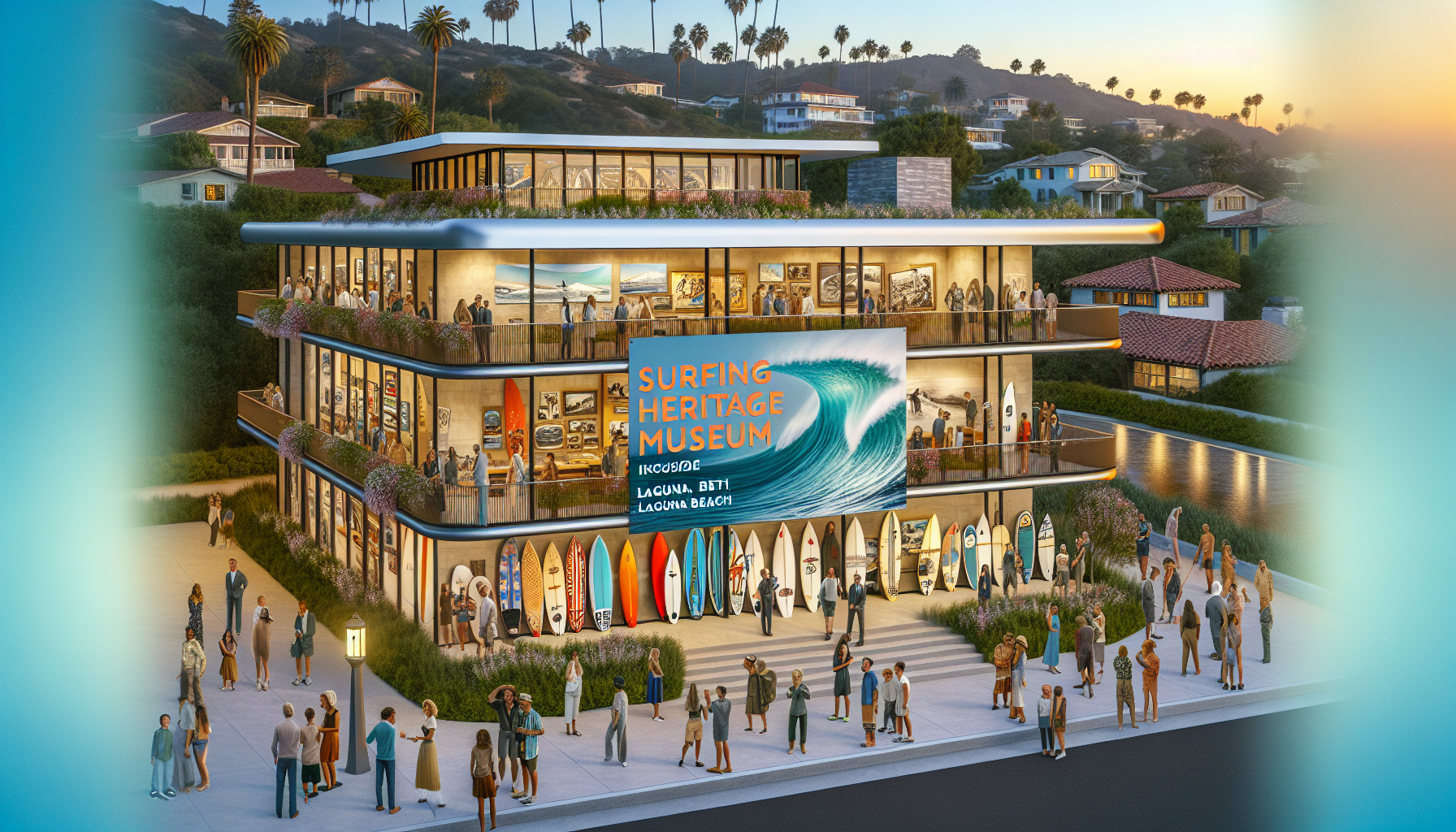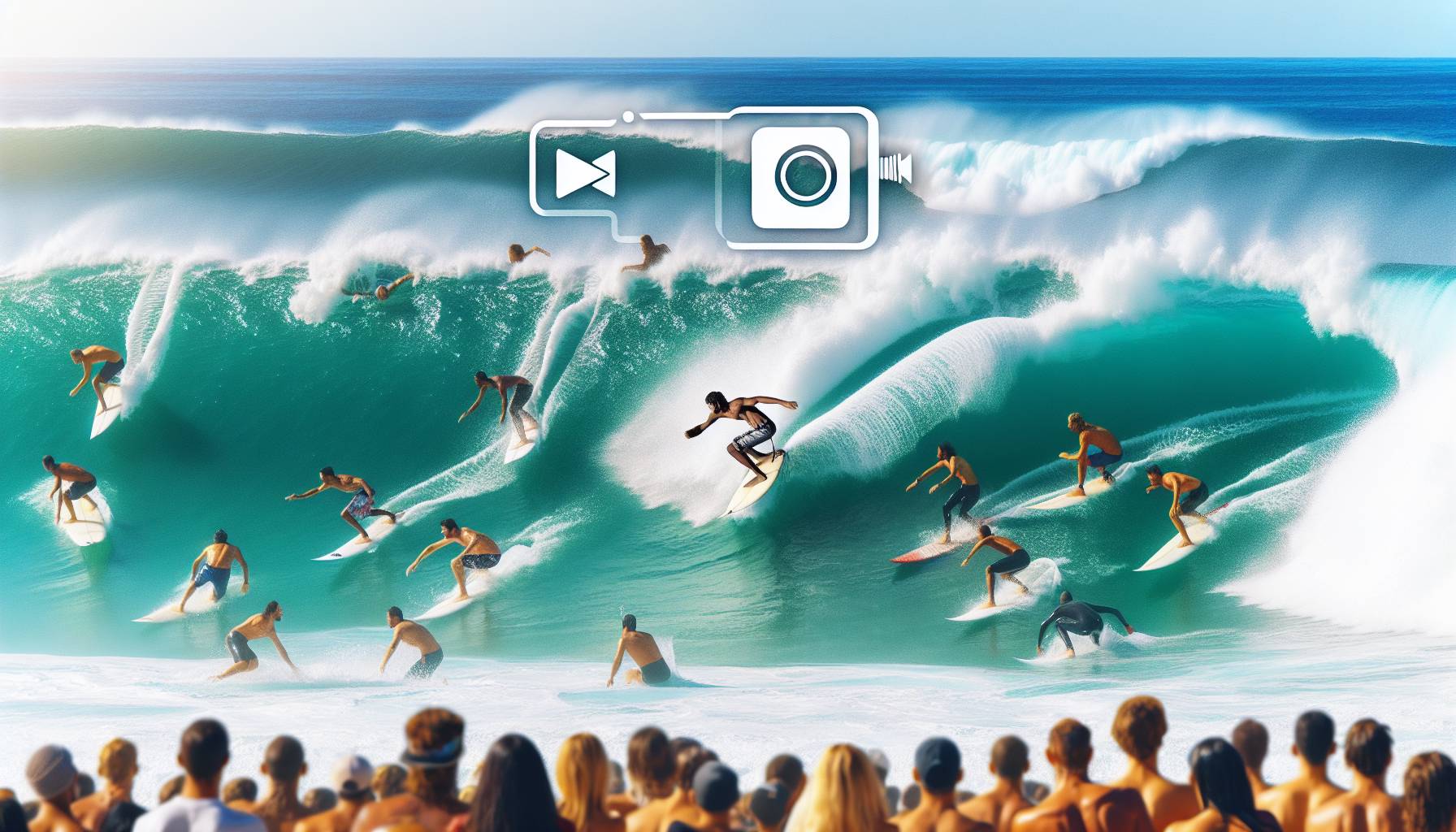
Surfing heritage on display
The museum’s collection offers a deep dive into the evolution of surfing, featuring an array of vintage surfboards, rare photographs, and memorabilia that trace the sport’s journey from its Polynesian roots to its modern-day global appeal. Each item tells a story — from hand-shaped wooden boards used in the early 20th century to iconic designs from the 1960s and 70s that helped define the golden era of surfing.
Visitors can explore exhibits dedicated to legendary surfers who shaped the sport, including pioneers who pushed the boundaries of wave riding and innovators who transformed board design. The museum also highlights the cultural impact of surfing, showcasing classic surf films, music, and fashion that emerged alongside the sport’s rise in popularity.
One of the standout features is a curated timeline that charts key moments in surfing history, including the influence of Australian surfers on the global stage. From the explosive energy of the shortboard revolution to the laid-back ethos of surf culture, the displays capture the spirit and evolution of surfing in a way that resonates with enthusiasts and newcomers alike.
Interactive elements allow guests to engage with the exhibits, including audio recordings of surf legends recounting their most memorable rides and touchscreens offering detailed insights into board construction techniques. The museum’s commitment to preserving and celebrating surfing heritage makes it a must-visit destination for anyone passionate about the ocean and the lifestyle that surrounds it.
From warehouse to waterfront
After years of operating out of a nondescript warehouse in San Clemente, the surfing museum is now preparing for a transformative relocation to the heart of Laguna Beach. The move marks a significant shift from a low-profile industrial setting to a vibrant coastal hub known for its artistic flair and deep connection to surf culture. The new location, just steps from the ocean, offers a fitting backdrop for a museum dedicated to the spirit of wave riding.
The original warehouse space, while functional, limited the museum’s ability to reach a broader audience. Tucked away from foot traffic and tourist routes, it was primarily frequented by die-hard surf aficionados who sought it out intentionally. The transition to Laguna Beach not only places the museum in a more accessible and scenic environment but also aligns it with a community that has long embraced surfing as part of its identity.
Renovations are underway to transform the new venue into a dynamic exhibition space that honours the museum’s roots while embracing modern design. The layout will feature open galleries with natural light, allowing the surfboards and artefacts to be displayed in a way that evokes the feeling of being near the sea. Plans include a dedicated area for rotating exhibits, giving curators the flexibility to showcase different aspects of surf history throughout the year.
For many in the surfing community, the move is more than just a change of address — it’s a homecoming. Laguna Beach has played a pivotal role in the development of surf culture in Southern California, and the museum’s presence there is seen as a celebration of that legacy. Local artists and surfboard shapers are already collaborating with the museum to create site-specific installations and educational programs that will further enrich the visitor experience.
The relocation also opens the door for expanded community engagement. With its new central location, the museum plans to host film screenings, panel discussions, and live shaping demonstrations that invite locals and tourists alike to connect with the stories behind the sport. By moving from warehouse to waterfront, the museum is poised to become a cultural landmark that not only preserves surfing’s past but also inspires its future.
Boosting visibility and tourism
With its new home in downtown Laguna Beach, the surfing museum is poised to become a major drawcard for both local and international visitors. The high-traffic coastal location places the museum within easy reach of beachgoers, art lovers, and tourists exploring the vibrant streets of the seaside town. This increased visibility is expected to significantly boost foot traffic, introducing a wider audience to the rich tapestry of surf history and culture housed within its walls.
Tourism officials and local business owners are optimistic about the museum’s potential to contribute to the area’s economy. Positioned near popular galleries, cafes, and surf shops, the museum adds another layer to Laguna Beach’s appeal as a destination that blends natural beauty with cultural depth. For Australian travellers, many of whom are drawn to California’s surf scene, the museum offers a unique opportunity to explore the shared heritage between two of the world’s most influential surfing nations.
To capitalise on its new location, the museum is rolling out a series of marketing initiatives aimed at surf enthusiasts and cultural tourists alike. These include collaborative promotions with local surf schools, guided walking tours that link the museum with historic surf spots, and seasonal events timed to coincide with major surf competitions and festivals. The goal is to position the museum not just as a static exhibit space, but as an active participant in the broader surf community.
Educational outreach is also set to expand, with school programs and surf history workshops designed to engage younger audiences. By partnering with local schools and youth organisations, the museum hopes to inspire the next generation of surfers and ocean stewards. Plans are in place for travelling exhibits that can be taken to other coastal towns, including potential collaborations with Australian institutions to highlight the global nature of surf culture.
As the museum settles into its new surroundings, its role as a cultural ambassador for surfing is expected to grow. The increased exposure will not only elevate the profile of the museum itself but also shine a spotlight on the enduring influence of surf culture — from California to Australia and beyond.
Surfing heritage finds a new home
Mate, if you’ve ever wandered through the backstreets of San Clemente, you might’ve stumbled upon a low-key warehouse packed to the rafters with surfboards, salt-stained memorabilia, and the kind of stories that make you want to wax up and paddle out. That hidden gem? The Surfing Heritage and Culture Center. And now, it’s finally getting the beachfront spotlight it deserves.
This legendary collection, once tucked away like a secret reef break, is packing up and heading to downtown Laguna Beach — a spot that’s as surf-soaked as it gets. We’re talking about a place where grommets and old salts alike can now stroll in off the sand and get a proper look at the roots of the sport we all froth over.
“It’s not just a museum, it’s a shrine to the soul of surfing,” said one local board shaper who’s been carving foam since the ’70s.
The move means more than just a change of postcode. It’s about giving the culture of surfing — from ancient Hawaiian wave riders to the Aussie legends who charged Bells and beyond — a proper stage. The new digs will feature:
- Classic boards from every era, including some shaped by the greats
- Archival footage that’ll make you want to drop everything and chase swell
- Stories and artefacts that trace the evolution of surf from sacred ritual to global obsession
For the diehards, it’s a pilgrimage. For the curious, it’s a crash course in why we live for the drop. Either way, the surf stoke just found a new home — and it’s right in the heart of Laguna.
Increased visibility in Laguna Beach
Now that the Surfing Heritage and Culture Center’s landed in downtown Laguna Beach, it’s not just catching more eyes — it’s turning heads faster than a rogue set at Snapper. Nestled among art galleries and beachside cafés, the museum’s new spot is pure gold for foot traffic. Locals, tourists, and the odd salty drifter can now stumble in straight off the sand and get a front-row seat to surfing’s rich backstory.
Laguna’s no stranger to wave-chasers, but this move puts the culture front and centre. With big glass windows showcasing vintage boards and surf art, it’s like a beacon for anyone who’s ever waxed up a single fin or dreamt of Indo barrels. And let’s be honest — it’s a lot easier to find than that old warehouse in San Clemente that felt more like a secret handshake than a public exhibit.
“We wanted to bring the soul of surfing to the street,” said one of the curators, who still rocks a sun-bleached mullet and swears by his 6’2” thruster.
The new location means more than just better parking. It’s about putting surf history where it belongs — in the thick of the action. With more eyeballs comes more buzz, and that means more support for preserving the stories, boards, and legends that shaped the sport. Plus, it’s a killer excuse to swing by after a morning sesh or while waiting for the tide to turn.
Whether you’re a frothing grom or a crusty old sea dog, the museum’s new home is a reminder that surfing’s not just something we do — it’s who we are. And now, it’s got the stage it deserves, right where the swell meets the street.

